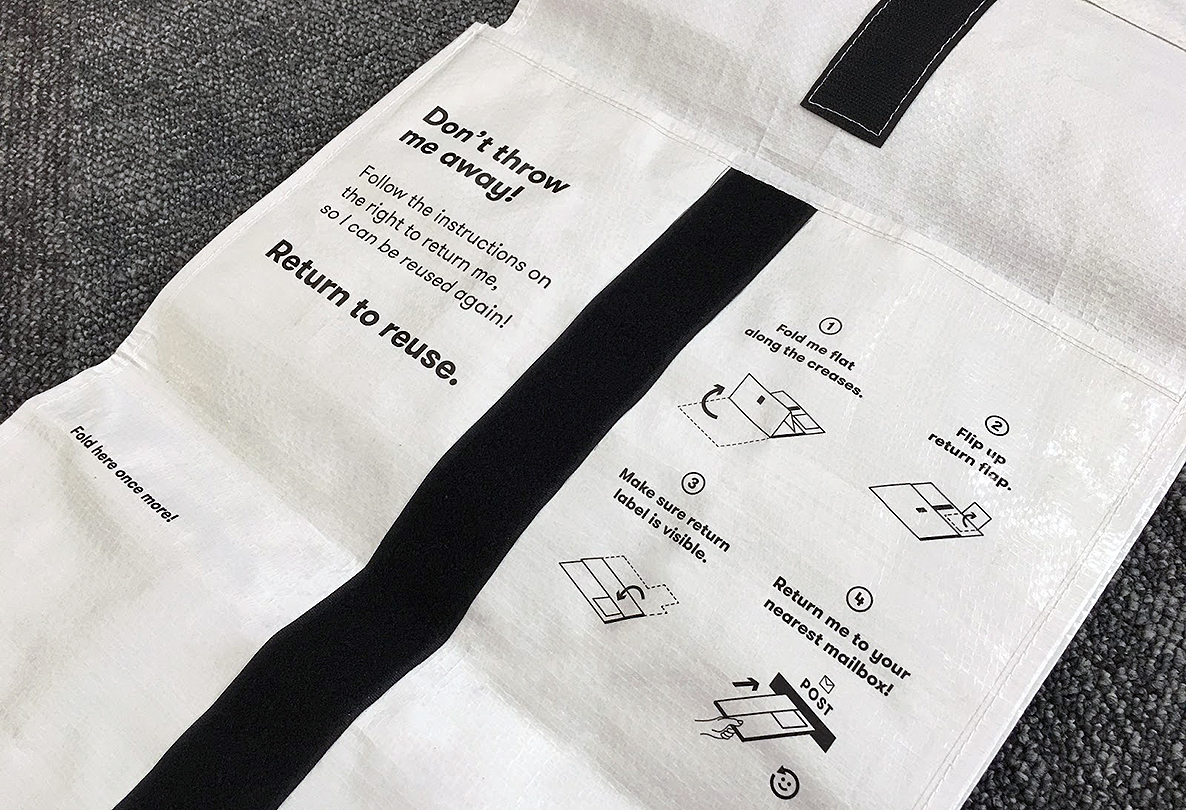[10. Sustainable
It is environmentally friendly packaging. Packaging is sustainable if designed in a holistic way, fully balanced with the product and its ways of use, so as to optimize the overall environmental performance.
RePack: circular packaging at the service of e-commerce

The SARS-CoV-2 pandemic has caused contrasting dynamics in the e-commerce sector over the past year and a half. As evidenced by various studies, if on one hand the online sale of services has collapsed following the crisis in the tourism and transport sector, on the other hand the sale of products has grown considerably: food, drugs, IT and electronics items ( to support remote work and distance learning), but also cosmetics, clothing and furniture.
In this scenario, one of the protagonists of e-commerce was undoubtedly the packaging. Packaging has always played a key role in remote purchases and shipments of goods, and with the pandemic it has definitely established itself as one of the great allies to ensure, during periods of confinement, the supply for families of food and basic necessities.
One of the critical aspects of digital commerce is the environmental impact of packaging. Even before the spread of Covid, online purchases have based their success on fast deliveries and the guarantee of intact products, even at the cost of not always being sustainable. However, this is no longer acceptable in the light of the current crises.
Packaging for e-commerce is one of the types most heavily criticized by public opinion. The considerable increase in the quantity of materials used, in particular cardboard and plastic, is unfortunately accompanied by not very virtuous phenomena such as over-packaging (packages with disproportionate volumes, or with an excess of layers and quantities of materials, compared to the characteristics of the products they contain) and the use of single-use packages, which are eliminated immediately after receiving the purchased goods.
In recent years, e-commerce packaging has been the subject of design interventions aimed at reducing unnecessary waste, with a view to circularity. One of the most significant responses in this sense were reusable packaging solutions, such as the one offered by RePack.
RePack is a Finnish company, born as a startup in 2011, which proposes a “packaging-as-a-service” solution: traders, instead of buying and becoming owners of the packaging for the shipment of their products, subscribe to a service based on the use of reusable packaging which end consumers can then return by post, using a pre-paid label.
To scale and reach more retailers, RePack has recently been integrated into the digital commerce system of Canadian Shopify, which according to recent estimates is currently used by over 1.7 million online stores: merchants can thus offer the delivery option “trashfree” (ie,“no garbage”) instead of “single-use”.



RePack bags are made of recycled plastic, light but particularly resistant, and last for at least 40 shipping and return cycles. Currently they are offered in three sizes, adjustable and adaptable to the content, to never send air.
In their new version, launched in the first half of 2021, RePack bags have strengthened their visual identity and communication of information, with the aim of making the instructions for returning these “returnable packaging” easier to understand. Above all, the need was to clearly distinguish retailer’s instructions (such as instructions for returning and exchanging products) from those of RePack. For this reason, a QR code has also been added to improve the information of the packaging.
As the only drawback, it should be noted that RePack bags are designed for goods that do not require particular protection during transport, a feature that could perhaps limit the spread of this system on a large scale and for all product categories currently sold through e -commerce. In any case, it remains a useful solution for all those goods resistant to possible impacts, such as clothing.


Another relevant example of reusable packaging for e-commerce is The Box, a solution proposed by the French Living Packets. The Box containers are made of durable plastic and are designed to be reused – say the manufacturers – for 1,000 shipping and return cycles.
Unlike RePack, The Box containers by Living Packets have a rigid structure, for greater protection of the contents, with the possibility of reconfiguring the internal part and eliminating any accessory packaging material for protection.
Furthermore, they are equipped externally with smart labels and internally with sensors that constantly monitor temperature, humidity and shocks; the data can be accessed at any time via your smartphone.
In addition to reusable packaging, another interesting experimentation line concerns packaging in compostable material, such as those proposed by New Zealand The Better Packaging Co. Similarly to RePack, this solution is also designed for the home delivery of non-perishable goods. If the final consumers do not wish to compost the used packaging, the latter can be returned to appropriate delivery points set up in the area and geolocated using a dedicated application.



Although with certain limitations, given by the characteristics of each solution, the cases presented so far, from reusable to compostable containers, represent virtuous examples of sustainability, and express an ethical concern for the reduction of waste and the environmental impact of packaging.
This takes on even more relevance compared to a sector such as e-commerce, which experienced exponential growth during the pandemic, but which will certainly continue to develop even in the post-Covid period and will constitute one of the great challenges for future evolution of packaging.

